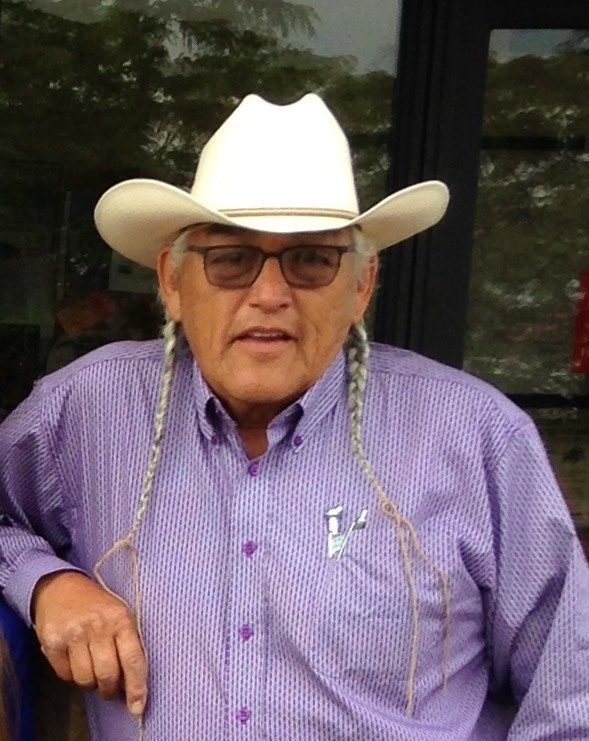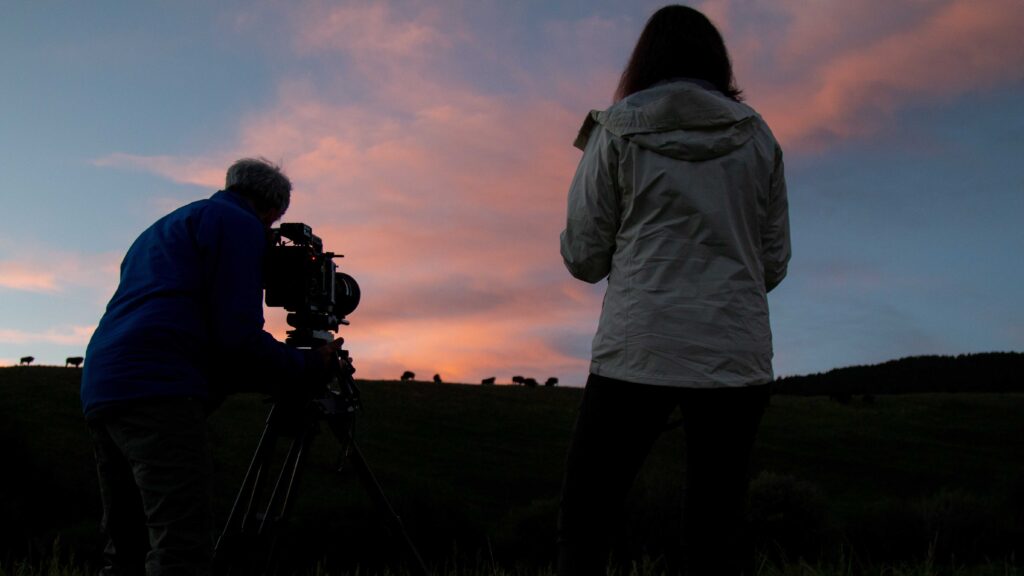The billboard project is expanding to Oregon

On location in Yellowstone National Park, Buddy Squires and Julie Dunfey film buffalo, a historically important animal hunted nearly to extinction. Photo by Jared Ames.
Among tribal citizens participating in documentarian Ken Burns’ upcoming feature “The American Buffalo,” Gerard Baker values the film as a Native history lesson.
A story covering 10,000 years of evolution, it relates how Indigenous people in the Great Plains relied on buffalo to survive. It portrays the overkilling and near extinction of the great mammal due to those motivated by profits.
Baker, a citizen of the Mandan, Hidatsa and Arikara Nation, said he considers it important that everyone, Indigenous or not, recognize the human impact of this past occurrence. The legacy remains for generations, he told Buffalo’s Fire.
In “The American Bison”, he speaks to the spiritual and cultural importance of bison. A four-hour expose, “The American Buffalo,” premieres in two parts Oct. 16 and Oct. 17 on PBS. Prior to this, he took part in another documentary by Ken Burns and Dayton Duncan, “The National Parks: America’s Best Idea.”
“If we can get the non-Indian to really understand what happened, that it’s not just an issue in their history books but in their systems – it’s who we are,” said Baker, “people have to open up to that.”
Baker is a former superintendent of the Little Bighorn Battlefield National Monument, Chickasaw National Recreation Area, Lewis and Clark National Historic Trail and Mount Rushmore National Monument. He dedicated over 30 years to working in the National Park Service, becoming the highest-ranking American Indian in its history. Though he considers his inclusion minor, he said, he has “a real positive feeling” about his part in the new movie. “I’m looking forward to seeing this, I’m looking forward to the historical value,” he said.

Filmed over the course of four years, the film by Burns and Duncan features interviews with several Native American scholars, history buffs and tribal members. They tell the story of buffalo’s historical role in the lives of Indigenous people across the Great Plains.
The Mandan, or Nueta, would pray in ceremonies before going out in search of bison. Receiving the gift of a buffalo formed a spiritual connection between the hunter and the hunted. To show that they were grateful for its sacrifice, the people used all parts of the animal; its spirit lived on through that, Baker said.
The skin would be made into robes, tipis, moccasins and boats. Spoons and cups were created from the horn. Even the tendons were used as bow strings.
Knowing those traditions is “very important for youth to understand who they are and their spirituality,” said Baker. “It helps them understand the fact that everything has a spirit. You don’t necessarily pray to that, but you pray with that to get your prayers to the Creator.”
Estimating a population of 30 million bison in the early 1800s, the documentary explores the reasons for the decline of the species’ numbers.
“The story of the American buffalo is also the story of Native nations who lived with and relied on the buffalo to survive, developing a sacred relationship that evolved more than 10,000 years but which was almost completely severed in fewer than 100,” Burns said in a PBS Press Release. According to the U.S. Fish and Wildlife Service 2022 figures, about 20,500 Plains bison roam in conservation herds today. The documentary notes that private commercial herds bring the number of buffalo in the United States to some 350,000. Most of them are descendants of only 77 animals from five founding herds rescued at the start of the 20th century. The Theodore Roosevelt National Park in North Dakota is currently home to small herds of 10-20 bison.

As the number of buffalo across the United States is on the rise, so is awareness of the cultural significance of the animal. Baker said he welcomes the documentary as a means to help people learn from history’s mistakes.
With the broadcast of “The American Buffalo,” PBS is rolling out educational materials to aid middle and high school classroom discussions on research and various perspectives. The materials, made by PBS Learning Media, will be available at the Ken Burns in the Classroom site.
Adrianna Adame
Former Indigenous Democracy Reporter
Location: Bismarck, North Dakota
See the journalist page© Buffalo's Fire. All rights reserved.
This article is not included in our Story Share & Care selection.The content may only be reproduced with permission from the Indigenous Media Freedom Alliance. Please see our content sharing guidelines.
Identification not yet made
UTTC International Powwow attendees share their rules for a fun and considerate event
Radio collaboration highlights importance of cooperation in a season of funding cuts for local media
A memorial in the Snow County Prison, now the United Tribes Technical College campus
Standing Rock Sioux Tribal Chairwoman Janet Alkire tells crowd, ‘We’re going to rely on each other’







